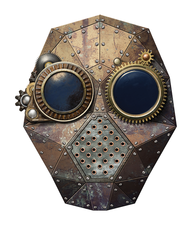Explore gaming on the Lakka console
DIY Retro Console

© Lead Image © donatas1205, 123RF.com
The Lakka Linux distribution comes with everything you need to play retro games and lets you install games directly in the user interface. All you need is a Raspberry Pi and, ideally, a simple gamepad.
In the pandemic, its not just Netflix series that are booming, but computer games, too. However, state-of-the-art gaming consoles like Nintendo Switch or PS5 are expensive, which makes Linux distributions like Lakka [1] all the more worthwhile. It even runs on the Raspberry Pi 3, which currently retails for $35 (EUR35, £34). In other words, you only pay a fraction of what you would have to fork out for a high-end console from Nintendo or Sony for a retro console that you can build yourself.
DIY retro game consoles require very little manual work. You simply plug the Raspberry Pi into a suitable enclosure and connect it to the monitor or TV. With Lakka, you don't even need a keyboard and a mouse; input can be managed with a gamepad like the Logitech F310 [2]. However, you will not want to do without a keyboard for convenience sake. It not only makes it easier to enter text, but you can also assign additional functions to the keys.
Features
The Lakka distribution is based on the LibreELEC [3] media player. The operating system does not need much space on the hard disk, with a pleasingly compact ISO image of about 400MB. LibreELEC also ensures that all files, including the kernel, are made current during the update, removing the need for you to install individual packages. RetroArch [4] is used as the graphical user interface, which results in Lakka self-configuring thanks to RetroArch's autoconfig feature. Gamepads, for example, are ready for use straightaway.
[...]
Buy this article as PDF
(incl. VAT)
Buy Linux Magazine
Subscribe to our Linux Newsletters
Find Linux and Open Source Jobs
Subscribe to our ADMIN Newsletters
Support Our Work
Linux Magazine content is made possible with support from readers like you. Please consider contributing when you’ve found an article to be beneficial.

News
-
SUSE Dives into the Agentic AI Pool
SUSE becomes the first open source company to adopt agentic AI with SUSE Enterprise Linux 16.
-
Linux Now Runs Most Windows Games
The latest data shows that nearly 90 percent of Windows games can be played on Linux.
-
Fedora 43 Has Finally Landed
The Fedora Linux developers have announced their latest release, Fedora 43.
-
KDE Unleashes Plasma 6.5
The Plasma 6.5 desktop environment is now available with new features, improvements, and the usual bug fixes.
-
Xubuntu Site Possibly Hacked
It appears that the Xubuntu site was hacked and briefly served up a malicious ZIP file from its download page.
-
LMDE 7 Now Available
Linux Mint Debian Edition, version 7, has been officially released and is based on upstream Debian.
-
Linux Kernel 6.16 Reaches EOL
Linux kernel 6.16 has reached its end of life, which means you'll need to upgrade to the next stable release, Linux kernel 6.17.
-
Amazon Ditches Android for a Linux-Based OS
Amazon has migrated from Android to the Linux-based Vega OS for its Fire TV.
-
Cairo Dock 3.6 Now Available for More Compositors
If you're a fan of third-party desktop docks, then the latest release of Cairo Dock with Wayland support is for you.
-
System76 Unleashes Pop!_OS 24.04 Beta
System76's first beta of Pop!_OS 24.04 is an impressive feat.

